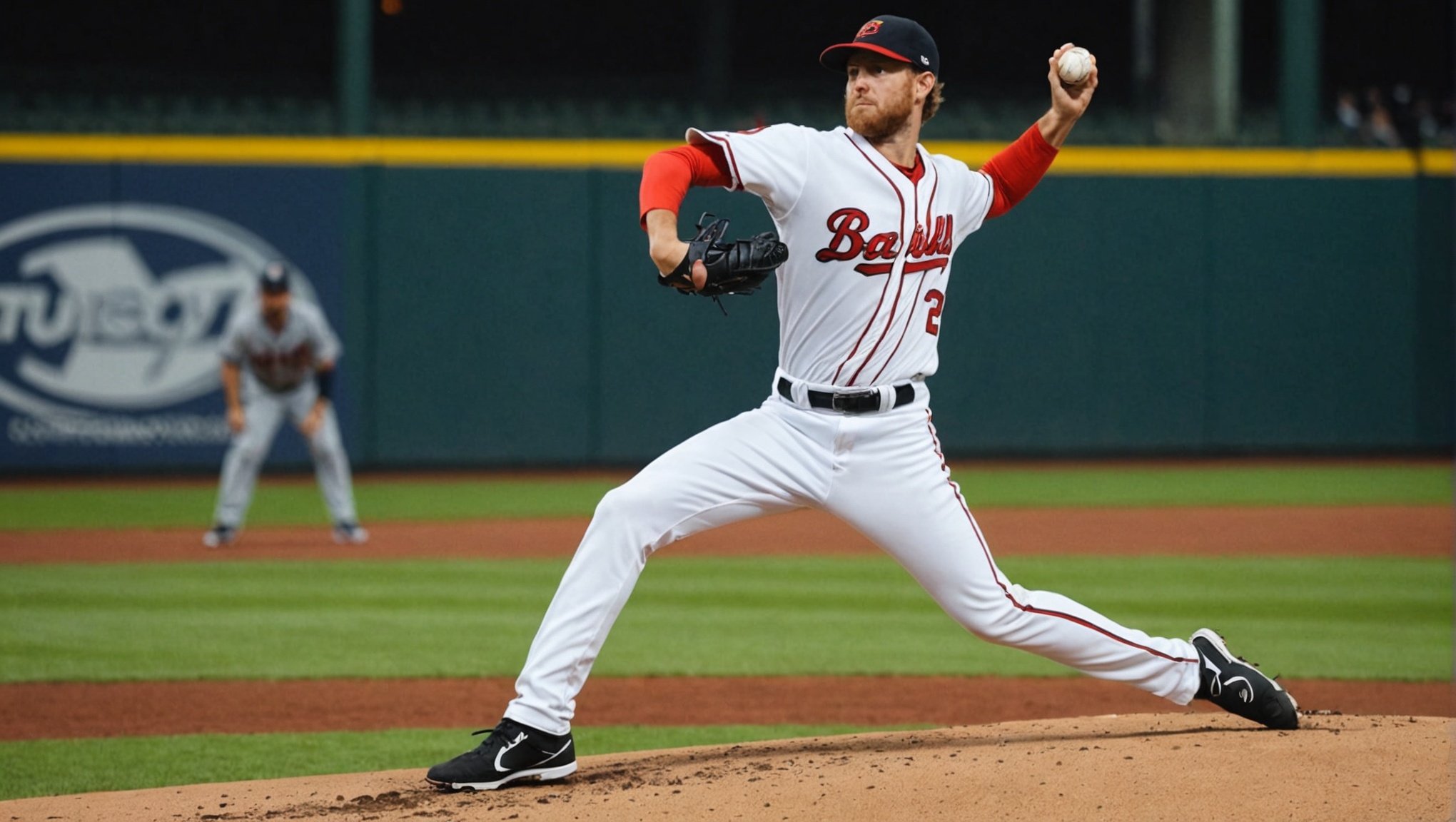Understanding the Importance of a Tailored Recovery Plan
An elbow injury recovery should begin with a tailored recovery plan. This ensures a unique approach is taken for each athlete, particularly pitchers who rely heavily on their elbow health. Post-surgery rehabilitation is not a one-size-fits-all solution because every athlete has distinctive needs and circumstances that influence their recovery.
Individualized recovery is significant as it considers various factors such as the nature and extent of the injury, the athlete’s physical condition, and their personal goals. In baseball, a pitcher’s elbow injury recovery might be influenced by their pitching style, workload, and even previous injuries. A well-designed, tailored recovery plan can lead to better outcomes by minimizing the risk of further injury and optimizing rehabilitation velocity.
Also read : Mastering Periodization: A Key to Preventing Burnout in Professional Snooker Players
Common elbow surgeries for pitchers often include procedures like ulnar collateral ligament (UCL) reconstruction, known as Tommy John surgery. These surgeries necessitate a specialized post-surgery rehabilitation plan to restore function and strength to the elbow. Tailored recovery ensures that these conditions and the athlete’s future career are meticulously managed. Thus, the recovery strategy is pivotal for the longevity of a pitcher’s career and their return to peak performance levels.
Phases of Recovery
Recovering from an injury or surgery is a dynamic process involving multiple stages. Comprehending these phases can aid in understanding the healing timeline and rehabilitation stages.
This might interest you : Harnessing Mobile Apps for Mental Wellness: Empowering Competitive Equestrians for Success
Initial Phase (0-2 weeks)
The initial phase focuses on protecting the injury from further damage. Key goals include minimising swelling and pain through rest and immobilisation, which are crucial strategies in this phase. Keeping the injured area immobilised reduces stress on healing tissues, whereas rest aids the body’s natural repair processes. Frequent signs of effective healing during this stage are reduced pain and swelling.
Intermediate Phase (3-6 weeks)
This phase introduces gentle range of motion exercises to restore mobility. The emphasis is on gradually increasing activity levels while ensuring pain and swelling are monitored. Pain and swelling should be watched closely as they are indicators of too much stress on the recovering area. If any discomfort arises, it’s crucial to ease off to prevent setbacks in the rehabilitation stages.
Advanced Phase (6+ weeks)
As the healing progresses, strengthening exercises become a part of rehabilitation to restore functionality. Returning to specific movements, like throwing mechanics, is carefully guided in this phase. The healing timeline during this stage includes continuous monitoring to determine the appropriate timeline for a safe return to play, ensuring full recovery.
Recommended Exercises and Techniques
Recovery and prevention of injuries in pitchers require a well-rounded exercise plan focusing on rehabilitation exercises, combining strength training and flexibility work.
Range of Motion Exercises
Key to maintaining joint health, range of motion exercises enhance mobility essential for effective pitching. Incorporate activities like shoulder circles and hip stretches, focusing on increasing flexibility and joint fluidity. Engaging in these exercises regularly aids in overcoming stiffness and preventing injuries. Aim to perform such exercises three to five times weekly, dedicating at least 15-20 minutes each session to gain optimum benefits.
Strengthening Exercises
Targeted at building resilience, strength training should focus on crucial muscle groups such as the shoulders, core, and legs. Exercises like push-ups, squats, and resisted shoulder rotations are vital. Integrating the concept of progressive overload—gradually increasing weights or resistance—ensures sustained improvement in muscle strength and endurance.
Sport-Specific Drills
Incorporating sport-specific drills is vital, simulating pitching movements to condition the body effectively. Drills like shadow pitching and resistance band motions emphasize movement replication while bolstering technique. Including these drills in the recovery program helps pitchers maintain skills and prepares them for game conditions, ensuring comprehensive rehabilitation and preparedness.
Injury Prevention Strategies
In the world of sports, particularly baseball, injury prevention is crucial for maintaining an athlete’s health and performance. A key aspect of this is establishing robust routines for both warm-up and cool-down. Properly warming up the muscles increases blood flow and flexibility, thereby reducing the risk of strains and sprains. Similarly, a good cool-down routine helps in gradually lowering the heart rate and preventing stiffness.
When it comes to elbow care, focusing on correct throwing mechanics is vital. Incorrect mechanics can lead to undue stress on the elbow, potentially causing injuries such as tendinitis or other overuse injuries. Training should incorporate specific techniques to ensure that the arm and body are working in harmony, minimizing risk and maximizing performance.
Routine assessments are equally important. Athletes should regularly evaluate their shoulder and elbow health, identifying any signs of wear and tear early. This can involve professional assessments by physiotherapists or sports medicine experts, ensuring any potential issues are addressed swiftly.
Promoting safe pitching practices is not just beneficial for injury prevention but can significantly enhance an athlete’s longevity in the sport. A well-rounded approach incorporating these strategies provides a proactive stance against injuries, facilitating a safer and more successful athletic career.
Case Studies and Expert Insights
Understanding recovery journeys and expert recommendations can significantly impact athletes facing similar challenges. Let’s dive into some real-world applications.
Case Study 1: Recovery Journey of a Minor League Pitcher
In this detailed case study, we follow a minor league pitcher who underwent elbow surgery after sustaining a severe injury. The athlete faced a rigorous rehabilitation timetable extending for over a year. Initially, the rehabilitation focused on regaining the pitcher’s range of motion, followed by strengthening exercises tailored to restore pitching ability gradually. The journey emphasises patience and discipline, as noted by physiotherapists involved in the process. One key takeaway from this rehabilitation experience is the importance of customizing recovery plans to an athlete’s specific needs, enabling optimal performance upon return.
Expert Insights from Sports Medicine Professionals
Sports medicine professionals, including experienced orthopedic surgeons, offer invaluable insights into managing elbow injuries effectively. According to these experts, one common piece of advice from athletic trainers is to incorporate flexibility exercises early in rehabilitation. Such exercises prevent stiffness and aid in quicker recovery. Surgeons specializing in elbow injuries stress the significance of adhering to a guided program, ensuring exercises are performed correctly to avoid further damage. They unanimously agree that a structured recovery plan facilitated by a multidisciplinary team is crucial in achieving successful rehabilitation outcomes.
By studying these case studies and expert insights, athletes can gain confidence and a roadmap to navigate their recovery journeys effectively.
Resources and Further Readings
When diving into rehabilitation, having access to additional resources can be transformative. Understanding where to look for recovery guides is vital. Websites of reputable health organizations often offer factual and up-to-date information on various health conditions and recovery strategies. Notable sources include the NHS and Mayo Clinic, providing credible insights into effective rehabilitation paths.
Books and articles play a significant role in deepening one’s knowledge about the rehabilitation process. Authors like Dr. Norman Doidge have explored the brain’s ability to heal itself, providing invaluable information that can inspire hope and support recovery efforts.
Consulting with healthcare professionals for personalized advice remains critical. While books and online resources offer a wealth of knowledge, professional engagement ensures strategies are tailored to an individual’s unique needs and medical history. This layer of personalization is not just recommended but essential for effective recovery.
In addition to professional advice, interactive recovery guides can provide step-by-step assistance, making the rehabilitation journey less daunting. Joining support groups or online communities also allows individuals to share experiences, foster encouragement, and gather motivation from peers on similar paths.













